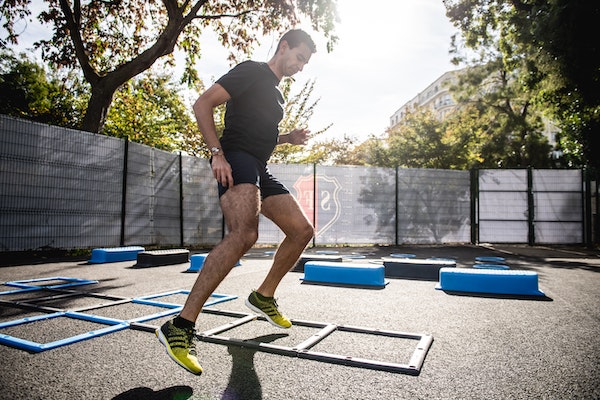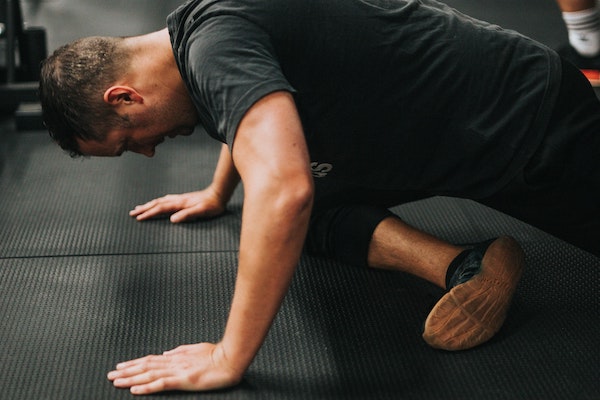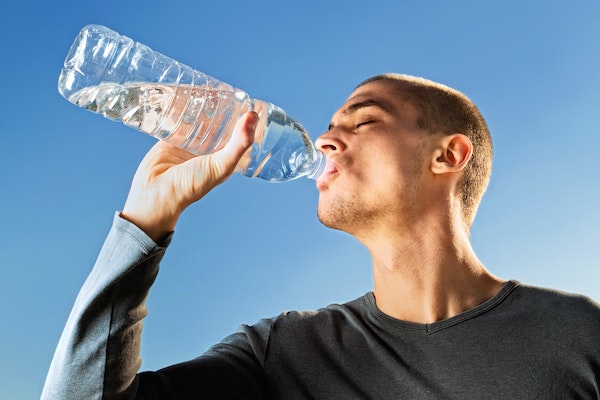Kick off your footy preseason with this simple guide to ensure your team is ahead of the game. This guide serves to ease your team from their offseason to their preseason with fitness testing, stretches, hydration and nutrition, strength and conditioning training and Team Trips. Following this guide will give your team the edge to beat their competitors.

Fitness Tests
Preceding the preseason, a football player must undertake tests which are broken into these 5 categories fitness, physical, psychomotor, psychological and medical, which are also broken into subcategories.
Fitness testing includes:
- Endurance measured by the beep test
- Leg power by a vertical jump test
- Speed timed in a 20 meter sprint
- Agility timed by running in a zigzag pattern with cones
Physical measured by:
- Height
- Weight
- Skinfold measuring a players body fat
- Flexibility through the sit and reach test
- Hand span, arm length
Psychomotor tests are:
- Kicking efficiency
- Reaction time
- Peripheral awareness
- Goal kicking
- Decision making
Psychological include:
- Personal strength
- Ability to work in high pressure situations
- Ability to comprehend a confusing situation
Medical:
- Medical checkup, eye test etc
These tests can indicate whether a player is in a healthy and able condition to play and perform for the upcoming season.

Stretching
Stretching is important for any athlete and can be advantageous when utilising certain stretches that can then be transferred to the field. The aim for stretching is to increase a player’s range of motion, prevent injuries and reduce delayed onset muscle soreness or DOMS. For a football player, dynamic stretches before a training session and static stretching afterwards is most effective. To begin a training session a light 5 minute jog to warm the body up is preferred, this can be creative with running, backward running, side to side runs or skipping.
The dynamic stretching must involve movement which can be arm swings, twisting the upper body, hip rotations, forward and side leg swings and calf stretches. Static stretches are beneficial post training, where you hold a stretch for 10-20 seconds which can include a neck, shoulder, back, hip flexors, hamstring, calf and groin.

Hydration and Nutrition
Footy players’ education on what and when they eat and drink is important all throughout the football season. The top priorities include hydration, replenishing your body’s fuel and muscle repair and gain. To assess if a player is correctly consuming enough liquids, a player’s body should be weighed before and after exercising and for every kilo lost, one litre of liquid should be replaced, with a combination of water and a sports drink. Another rule of thumb is to drink 2 litres of water every day and then 250mls for every 30 minutes of exercise. The physical testing results come into play when determining the amount of carbohydrates and protein that should be consumed.
To fuel your body, your diet should consist of foods high in carbohydrates such as cereal, fruit, bread, pasta, rice, noodles, potato and legumes. Per day, 6-8gm of carbohydrates per kilo of a player’s body weight should be consumed. Foods to aid in muscle repair and gain are protein rich which include meat, fish, dairy, nuts, tofu, soy protein, legumes and beans and nuts. A player should consume 1.2-1.6gm of protein per kilo of body weight. Educating players on proper hydration and nutrition is important when they are left to their own decisions and also prevents them from falling for fad diets or gimmicks.

Strength and Conditioning Training
Strength and conditioning programs primarily focus on improving players performance and preventing injury. They work cohesively with each other, using set weights in a scheduled regimen to reach a player’s physically fit point and prepare the body for the competition stage of the season. It is quite easy to fall into the trap of looking in the mirror and expecting large muscles. However, big muscles, overuse of machines and isolating exercises may not be as effective for a football player.
Examples of controlled exercises with body weight are:
- Front raises
- Step up
- Shoulder presses
- Deep squat
- Bench press
- Deadlift
- Pull up
- Dips
- Calf raises
- Lunges
To change up these basic exercises, small weights, alternating with a single arm or leg, elevating it with a bench is also very effective for strength and conditioning for a player.

Focus on Pre-Season Bonding
Now the training program has been completed it is time to focus on the teams bonding prior to the season. A football team should work closely together, communicate effectively, have trust and support in each other throughout game play. The bond and connection may be good through team dinners and training sessions but start strong and take away the game play element by sending your team on a Team Trips. By leaving your home city and travelling to a new destination takes players out of their comfort zone and daily distractions and allows them to get to know each other, especially whilst experiencing the various activities Team Trips have to offer.
Start by selecting a location from Sydney, Melbourne, Gold Coast, Byron Bay, Airlie Beach, Brisbane, Perth, Adelaide, Hobart, Darwin or Cairns in our Australian destinations or travel abroad to one of our New Zealand destinations. The activities vary from destinations but may include private boat parties and winery tours to jet skiing and skydiving, depending on your relaxation or adrenaline desire. Team Trips also offer the opportunity to create your own package, which is able to cater the teams wants on their preseason vacation.
The football season can be a stressful time for the team mentally and physically but planning the preseason doesn’t need to be. By following the above guide from doing routine checks on each player to check where they are at, performing dynamic and static stretches, educating them on hydration and nutrition, setting up a strength and conditioning program and sending the team on a Teams Trip will best prepare the team and give them the edge over competitors.

